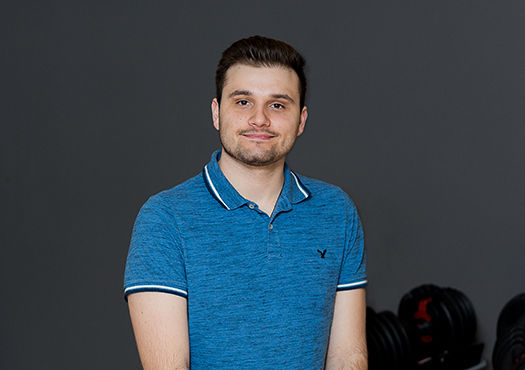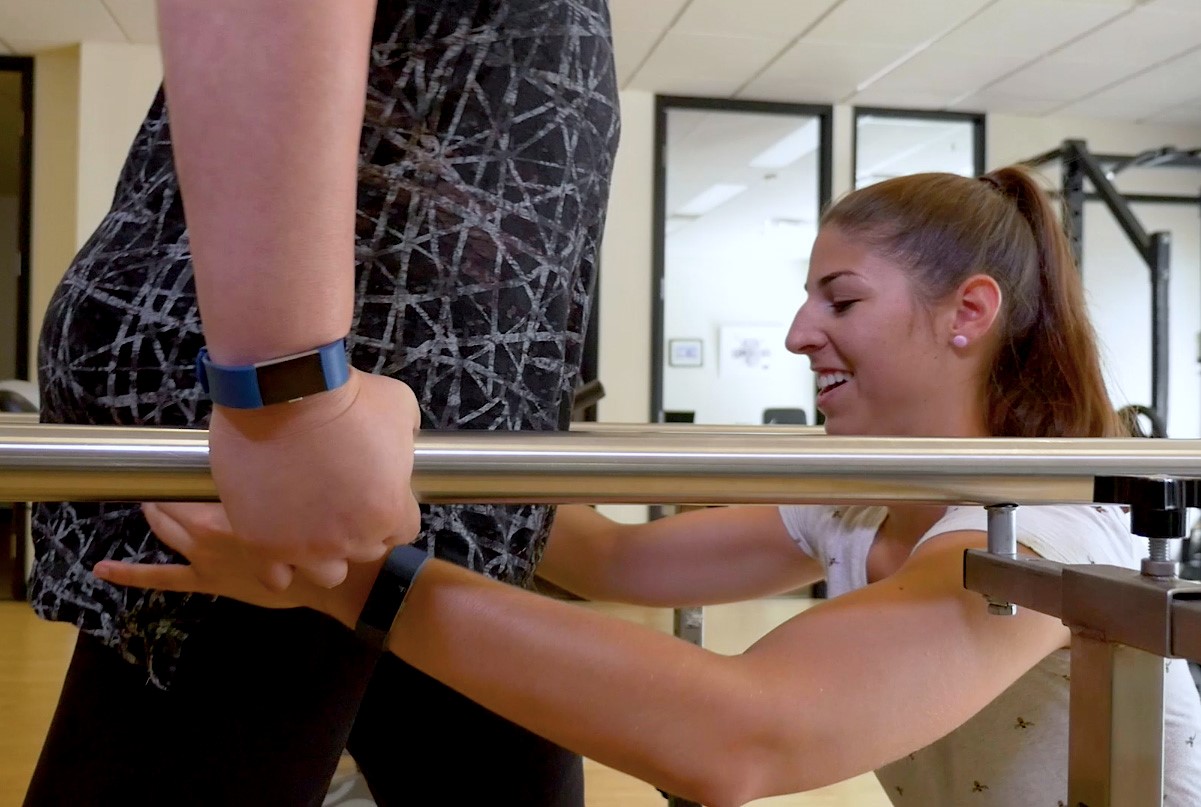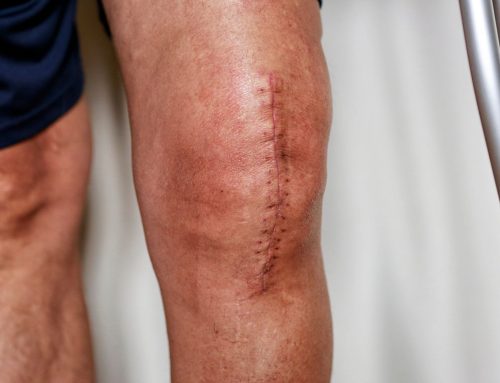On average, every person will experience two broken bones over the course of a lifetime.[i] As our populations get older, it is estimated that the incidence of age-related fractures will only increase.
In this blog, we will discuss how fractures occur, and the most commonly broken bones, as well as classifications and types of fractures. In addition, we will explore the fracture healing process and the role that various health professionals, including physiotherapists and occupational therapists play in fracture healing and fracture treatment.
Table of Contents:
- What is a fracture?
- Most common types of fractures
- Classifications of fractures
- Causes of fractures
- Clinical presentation of fractures
- Three stages of healing of fractures
- Fracture treatment
- Fracture rehabilitation
What is a Fracture?
A bone fracture is the medical term for a broken bone. Fractures occur when a force is applied which is greater than the bone can withstand. These forces generally occur to the long bones of the body, specifically the bones of the arm which are fractured more frequently than any other region of the body.
You may also enjoy reading: Pediatric Fracture Rehabilitation
Most Common Types of Fractures
- Clavicle Fracture – The collarbone, or clavicle, is often the bone that breaks most frequently. It sits between the shoulder blade and upper ribcage, and its slim shape makes it prone to breaking during sports or car accidents.
- Hip Fracture – Hip fractures are most common among older adults, mainly due to arthritis and the natural weakening of bones that comes with age. Seniors face a greater risk of falling, with hip fractures being a significant concern. Treating a broken hip typically involves surgery and a lengthy recovery process.
- Wrist Fracture – The wrist is another frequent site for fractures, especially during falls on an outstretched hand, otherwise known as FOOSH injuries, or certain activities like skiing or biking. With eight wrist bones and two forearm bones susceptible to breaking upon impact, it’s a vulnerable area for injury.
- Ankle Fracture – If the ankle joint is rolled, twisted, or forced into an unnatural position, it can result in a broken bone. Serious ankle injuries often necessitate surgery and several weeks of recovery.
- Forearm Fracture – Injuries to the forearm often stem from falls, car accidents, or sports-related incidents. These fractures typically happen due to direct impact or twisting forces transferred through the arm.[ii]
You may also enjoy reading: Ankle Sprain Physiotherapy
Classifications of Fractures
There are two main classifications of fractures. Open fractures occur when either the end of the bone or another object has pierced the skin. These are more concerning since there is a possibility of infection. Open fractures involve specific post-surgery care and scar treatment but the details of this will not be addressed in this particular blog. On the other hand, with closed fractures the skin stays intact.
Table 1: Types of Fractures[iii]
| Name of Fracture | Description | Image |
| Spiral | Occur due to twisting | 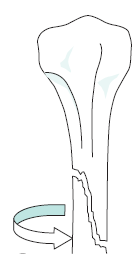 |
| Transverse/oblique | Occur due to forces acting at different angles | 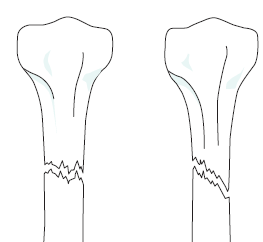 |
| Compression | Occur due to force along the direction of the bone | 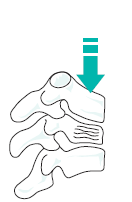 |
| Greenstick (incomplete) | Common fracture type among children whose bones are flexible | 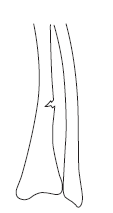 |
| Avulsion | Occur when part of bone is pulled off | 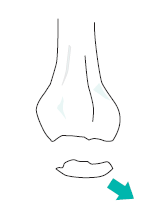 |
| Stress | Caused by repeated minor trauma | Various |
You may also enjoy reading: Does Ice Help with Inflammation
Causes of Fractures
Fractures are caused by two main factors: trauma and pathological conditions. Trauma is a form of physical injury such as a direct blow, a fall from height or a heavy object falling on part of the body. With pathological conditions, on the other hand, disease weakens the bone which can cause the fracture. A disease which commonly causes fractures is osteoporosis, although this is more common in older adults.[iv]
You may also enjoy reading: Common Shoulder Injuries
Clinical Presentation of Fractures
Fractures may present with one or more of the following features:
- Pain
- Deformity (occurs when bone is displaced)
- Oedema (buildup of bodily fluid and swelling)
- Muscle spasm
- Abnormal movement/crepitus
- Loss of function
- Shock (due to blood or fluid loss)
- Limitation of joint movement
- Muscle atrophy (loss of muscle strength)[v]
You may also enjoy reading: Knee Osteoarthritis Physiotherapy
Three Stages of Fracture Healing
The healing of broken bones depends on an adequate blood supply and biomechanical stability. Fractures also require different healing periods depending on the age of the person, as well as other factors such as nutrition, smoking and diabetes.
Children’s bones generally heal faster than adult bones because their bones are still growing. In pediatric cases, fractures heal a lot faster than adults because their bones are surrounded by a thick layer of connective tissue called periosteum which provides the blood supply necessary for rapid healing. As we age, this connective tissue layer becomes thinner resulting in a longer healing period.[vi]
Fracture healing involves three stages including the inflammatory phase, reparative phase and remodeling phase. The phases are listed below along with a brief description of what is occurring during each.
- Inflammatory Phase (hours-days after fracture): blod clot forms and becomes organized with the tissues necessary for bone formation.
- Reparative Phase (days-weeks after fracture): a thick mass, called a callus, forms between the bone ends and bone-forming cells begin to form new bone.
- Remodeling Phase (months-years after fracture): longest phase of bone healing. During this phase, the callus surrounding the bone responds to activity and external forces as it becomes sculpted and smoothed to resemble the bone prior to the fracture.[vii]
You may also enjoy reading: Shin Splints Physiotherapy
Fracture Treatment
Often, when an individual experiences a fracture, their first point of contact will be a hospital setting. Within the hospital setting, doctors aim to manage fractures by both reduction and immobilization.
Reduction is a term for realigning the bones to normal position. This is often done under anesthesia. In addition to reduction, immobilization involves using a cast or splint to maintain the alignment of the bone, provide the optimal healing environment and to relieve pain.[viii]
Fracture treatment may also involve surgery to fix the broken bone using metal screws, pins, rods or plates to hold the bone in place.
You may also enjoy reading: Warm Ups for Sports
Fracture Rehabilitation
Although fractures can occur due to a range of causes and present in various ways, one commonality among all types of fractures is that bones undergo a natural healing process over time. Despite this fact, fractures require careful management and rehabilitation to ensure optimal recovery and long-term function.
After fracture treatment by a medical doctor, the implementation of physiotherapy and occupational therapy interventions using a multidisciplinary approach is essential to address the diverse needs of clients with fractures.
Physiotherapy and occupational therapy play a vital role in the rehabilitation process, offering tailored interventions to improve joint mobility, restore function, and promote overall recovery. By incorporating a combination of active and passive techniques, physiotherapists can help clients regain strength, flexibility, and range of motion following fractures.
Additionally, early intervention and ongoing support from physiotherapy and occupational therapy professionals contribute to better outcomes and enhanced quality of life for clients.
References
[i] Bone Fracture Facts, Osteo Pharma
[ii] The Five Most Commonly Broken Bones in the Human Body, Orthopedic & Spine Center
[iii] Porter, S. B. (2013). Tidy’s physiotherapy. Elsevier.
[iv] Porter, S. B. (2013). Tidy’s physiotherapy. Elsevier.
[v] Porter, S. B. (2013). Tidy’s physiotherapy. Elsevier.
[vi] Fractures. Fractures in Children | Boston Children’s Hospital. (n.d.).
[vii] Fracture Healing, The Royal Children’s Hospital Melbourne
[viii] GIMIGLIANO, F., LIGUORI, S., MORETTI, A., TORO, G., RAUCH, A., NEGRINI, S., & IOLASCON, G. (2022). A systematic review of Clinical Practice Guidelines for the management of fractures in children to develop the who’s package of interventions for rehabilitation. European Journal of Physical and Rehabilitation Medicine, 58(2). https://doi.org/10.23736/s1973-9087.21.06916-1
Written by


